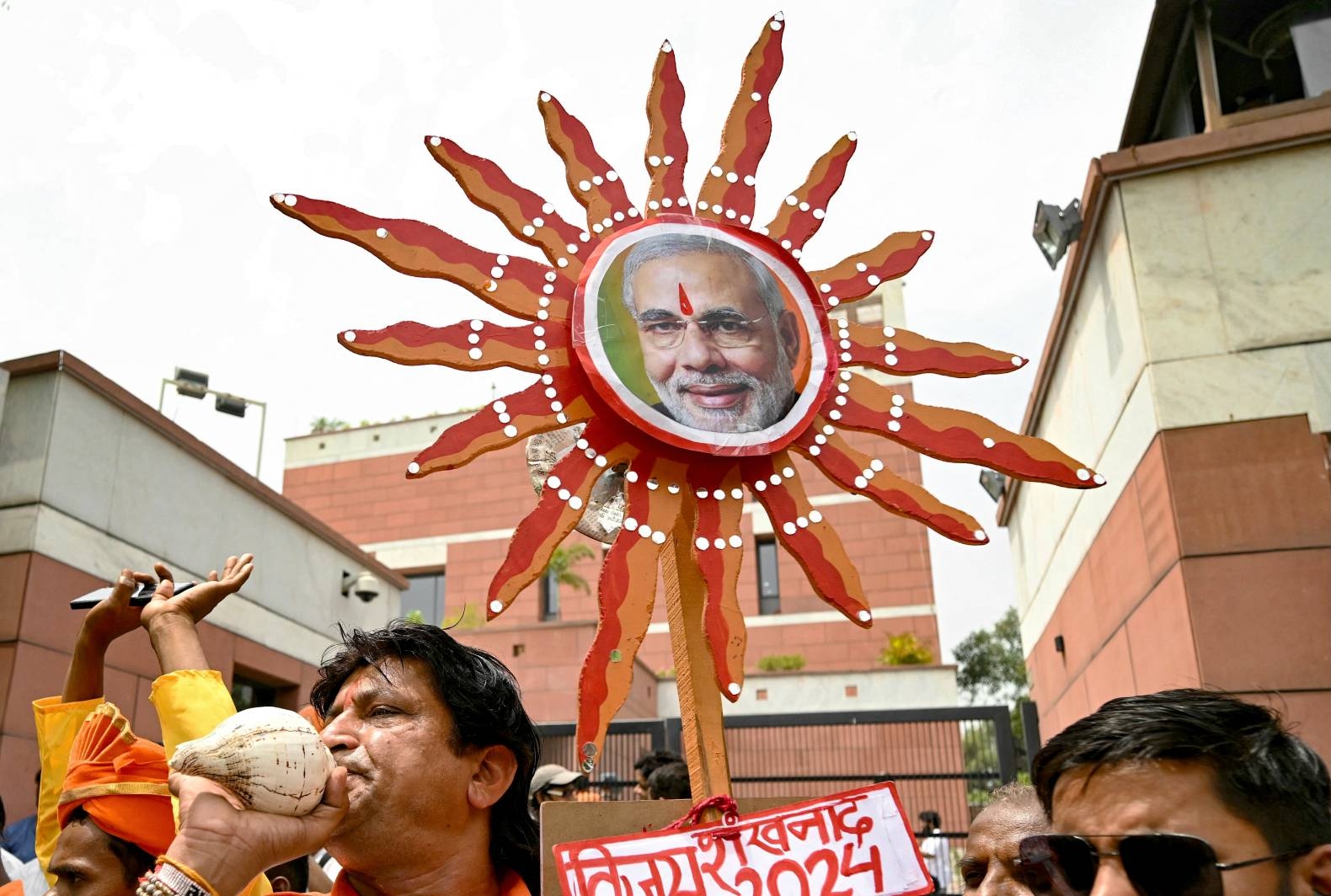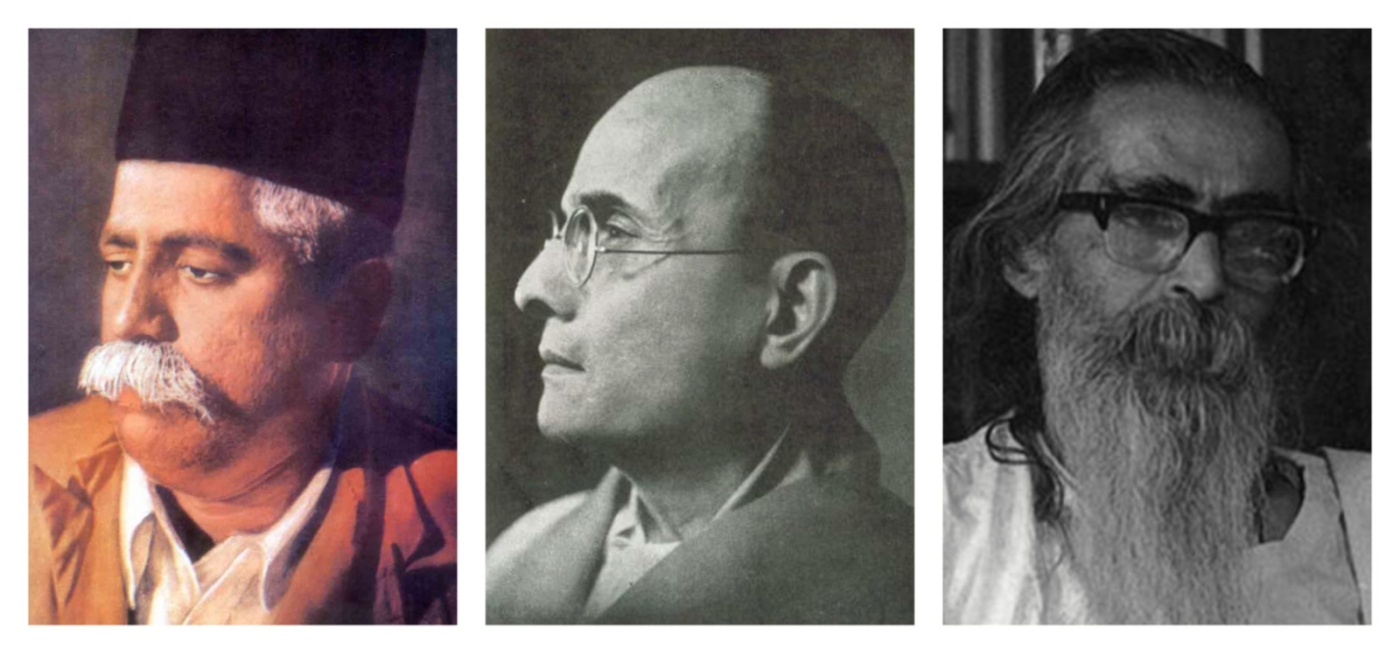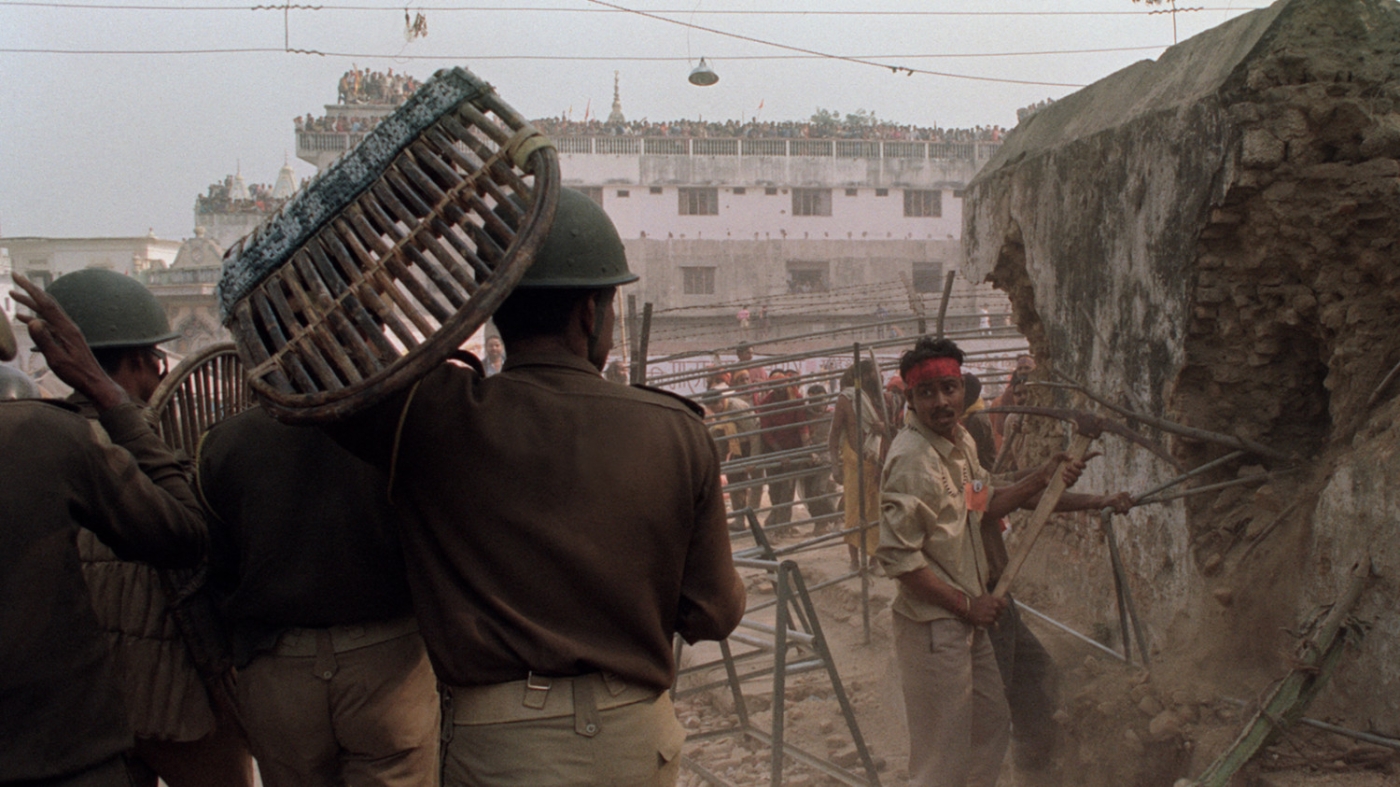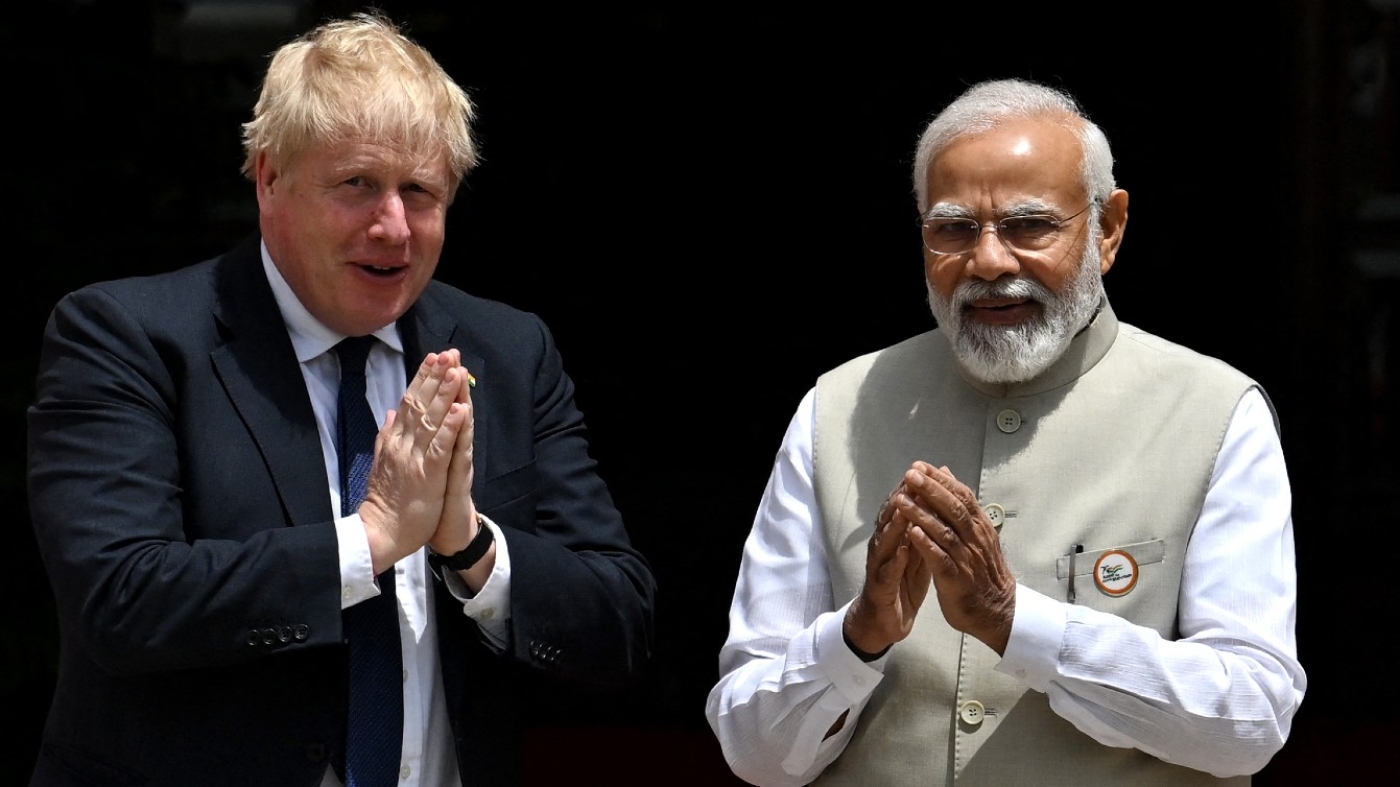What is Hindutva and why does it matter?

Narendra Modi has been re-elected as prime minister of India, with his BJP-led alliance the biggest power bloc in parliament, albeit with a reduced majority.
Under Modi, who has been prime minister since 2014, the idea of Hindutva - sometimes known as Hindu nationalism - has become more popular, but at the expense of minority groups, including Muslims, Sikhs and Christians.
What is Hindutva?
The term Hindutva was first used in 1892 by Bengali scholar Chandranath Basu to describe the state or quality of being Hindu - or "Hindu-ness".
It took on its current meaning of being a political ideal in a 1923 essay by Indian activist Vinayak Damodar Savarkar. In a paper titled “Hindutva: Who is a Hindu?” Savarkar, who described himself as an atheist, wrote that “Hindutva is not identical with what is vaguely indicated by the term Hinduism".
New MEE newsletter: Jerusalem Dispatch
Sign up to get the latest insights and analysis on Israel-Palestine, alongside Turkey Unpacked and other MEE newsletters
He tried to separate the term Hindutva from “religious dogma or creed,” and instead link the idea of Hinduism with that of ethnic, cultural and political identity.
Savarkar suggested that to Hindus, India was both a “fatherland” and a “holy land”: this distinguished them from non-Hindus, for whom it was the former but not the latter.
“Their holy land is far off in Arabia or Palestine," he wrote. "Their mythology and god-men, ideas and heroes are not the children of this soil. Consequently their name and their outlook smack of a foreign origin."
In addition, much of modern-day Hindu nationalism has focused on the Mughal Empire, which ruled the area that now includes India, Pakistan and Afghanistan from the 16th to the 18th centuries.
Savarkar’s definition of Hindutva went on to form the basis of Hindu nationalist political ideology. It has been used by the RSS (Rashtriya Swayamsevak Sangh) group, India's ruling BJP (Bharatiya Janata Party), and other organisations in the Sangh Parivar right-wing Hindu nationalist umbrella grouping.
What is the RSS?
The RSS, with around six million members, has described itself as the world’s largest volunteer organisation. It is the main vehicle through which Hindutva ideas are spread.
It was founded in 1925 by physician Keshav Baliram Hedgewar as a movement against British colonial rule and in response to Hindu-Muslim riots.
Hedgewar, heavily influenced by the writings of Savarkar, set up the RSS as a group dedicated to protecting Hindu religious, political and cultural interests under the “Hindutva” banner. Although the group supported independence, it did not play any significant role in the fight for freedom from British colonial rule.
Hedgewar was highly critical of the Congress Party, India’s main independence movement, for both its diversity and its political hierarchy. In contrast, RSS members were uniformed volunteers of equal rank, in whom discipline was instilled through daily exercise and paramilitary training drills.
What are the links between the RSS and fascism?
In 1940 Hedgewar died and Madhav Sadashivrao Golwalkar, one of the ideological architects of the RSS, took charge of the group, taking inspiration from European fascism, including Nazi Germany.
In his 1939 book We, or, Our Nationhood Defined, Golwalkar wrote: “To keep up the purity of its race and culture, Germany shocked the world by her purging of the country of the Semitic races - the Jews. Race pride at its highest has been manifested here… a good lesson for us in Hindustan to learn and profit by.” The RSS has since distanced itself from the book.
In May 2022, a teacher in Uttar Pradesh was suspended for posing the examination question: “Do you find any similarities between Fascism/Nazism and Hindu right-wing (Hindutva)? Elaborate with the argument.”
Italian historian Marzia Casolari, in her book In the Shadows of the Swastika, researched archives in Italy, India and the UK to outline the relationship between Hindu nationalism and Italian fascism and Nazism.
Hindutva has attracted the attention of right-wing European extremists in recent years. Norwegian mass murderer Anders Breivik, responsible for the 2011 Oslo and Utoya terror attacks in which 77 people were killed, hailed the Hindu nationalist movement as a “key ally to bring down democratic regimes across the world”, listing the websites of the RSS and BJP among others.
What role does the RSS play in Indian politics?
In 1948, the RSS was banned by the Indian government after one of its members, Nathuram Godse, assassinated anti-colonial hero Mahatma Gandhi. The RSS said Godse was a rogue extremist who had left the group by the time of the killing, something Godse’s family members have since disputed.
A year later, the ban was lifted and an official investigation absolved the RSS of involvement in the assassination. Since then the group has recovered to become one of the biggest forces in Indian society.
It gained particular prominence during the 1980s after calling for a Hindu temple to be built over the Babri mosque, a 16th-century Muslim place of worship in Ayodhya, because it believed the Hindu god Ram was born there.
The mosque was destroyed by Hindu extremists in 1992. During the subsequent riots, allegedly spurred on by RSS "foot soldiers", an estimated 2,000 people were killed, mostly Muslims.
The group's popularity increased after the violence, as did that of the BJP, which is often referred to as the political wing of the RSS. The BJP subsequently won parliamentary elections in 1996 and 1998.
What links Narendra Modi and Hindutva?
In 2002, extreme Hindutva nationalist groups belonging to the Sangh Parivar coalition were blamed for instigating the Gujarat riots, during which 790 Muslims and 254 Hindus were killed. Narendra Modi, the then chief minister of Gujarat, was accused of failing to stop the violence. On this basis he was banned from entering the UK and US, a ban which has since been reversed.
Modi, who has been Indian prime minister since 2014, is a longtime RSS member. Following his re-election to office in 2019, a study found that of 53 ministers from the BJP in Modi’s government, 38 (71 percent) had an RSS background.
Its influence can be seen especially in policy areas such as education, where RSS efforts have led to some Indian states teaching Hindu scripture as historical fact.
During Modi's tenure, the BJP has attempted to erase all traces of Mughal rule and Muslim influence over the history of the land, including introducing a "rationalised syllabus" as well as removing markers of the Mughal empire from public life, such as changing the names of cities including Allahabad and Faizabad.
Does the RSS have any influence beyond India?
The RSS may have begun as a 17-member cadre in Hedgewar’s living room in Nagpur, but it now has more than 80,000 shakhas (branches), thousands of schools across India, and a membership which includes nearly three-quarters of government ministers.
The RSS also has a presence around the world: its overseas units, known as Hindu Swayamsevak Sangh (HSS), operate in 39 countries, including the US, Australia and the UK.
The overseas shakhas provide a means for community activities and charity. But they have also become a vehicle, along with the Overseas Friends of BJP (OFBJP), for mobilising votes for Modi, encouraging friends of family to vote back home. Hindutva adherents abroad have also been known to provide expertise and funding to help the BJP electoral machine.
Their most visible presence has been in organising high-profile mass rallies for Modi during his overseas trips, such as the “Howdy Modi” event in Texas during 2019, which was attended by then-US President Donald Trump and 50,000 others.
In September 2021, Democratic Party officials in New Jersey accused Hindutva organisations of “infiltrating all levels of politics” in the US. These included the successful blocking of a 2013 congressional resolution that warned against the Hindu nationalist movement.
The Hindu nationalist movement has created controversy in the UK too. During the 2019 general election, right-wing, anti-Muslim activists targeted British Hindus with text messages urging them not to vote for the UK Labour Party, accusing it of being “anti-India” and “anti-Hindu”.
And in September 2022, after the weeks-long confrontations between Hindu and Muslim communities in Leicester, the Muslim Council of Britain condemned what it described as "the targeting of Muslim communities in Leicester by far-right Hindutva groups". Videos on social media showed men in balaclavas near mosques chanting “Jai Shri Ram” (Glory to Lord Ram), a slogan used by far-right Hindus during anti-Muslim rallies.
The scenes came just days after calls increased for the UK government to ban a speaking tour by Modi ally and nationalist activist Sadhvi Nisha Rithambara. Organisers eventually called off the tour, citing her ill health.
There is also a concerted effort by Hindu nationalists in Washington and London to lobby against Kashmiri self-determination and demonise any efforts to internationalise the conflict, or introduce it as an issue at the UN, the US Congress or the UK parliament.
Such voices have also lobbied to downplay and dilute fallout in the West from violent suppression of Kashmiris in south Asia.
Middle East Eye delivers independent and unrivalled coverage and analysis of the Middle East, North Africa and beyond. To learn more about republishing this content and the associated fees, please fill out this form. More about MEE can be found here.








